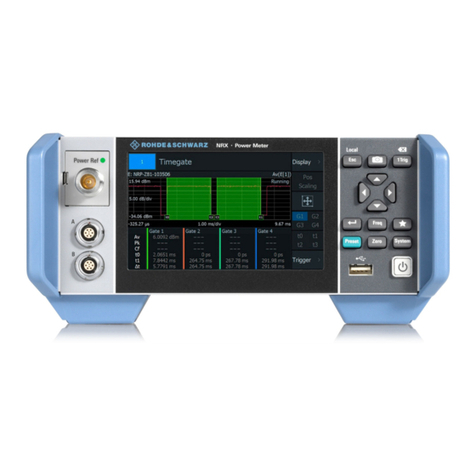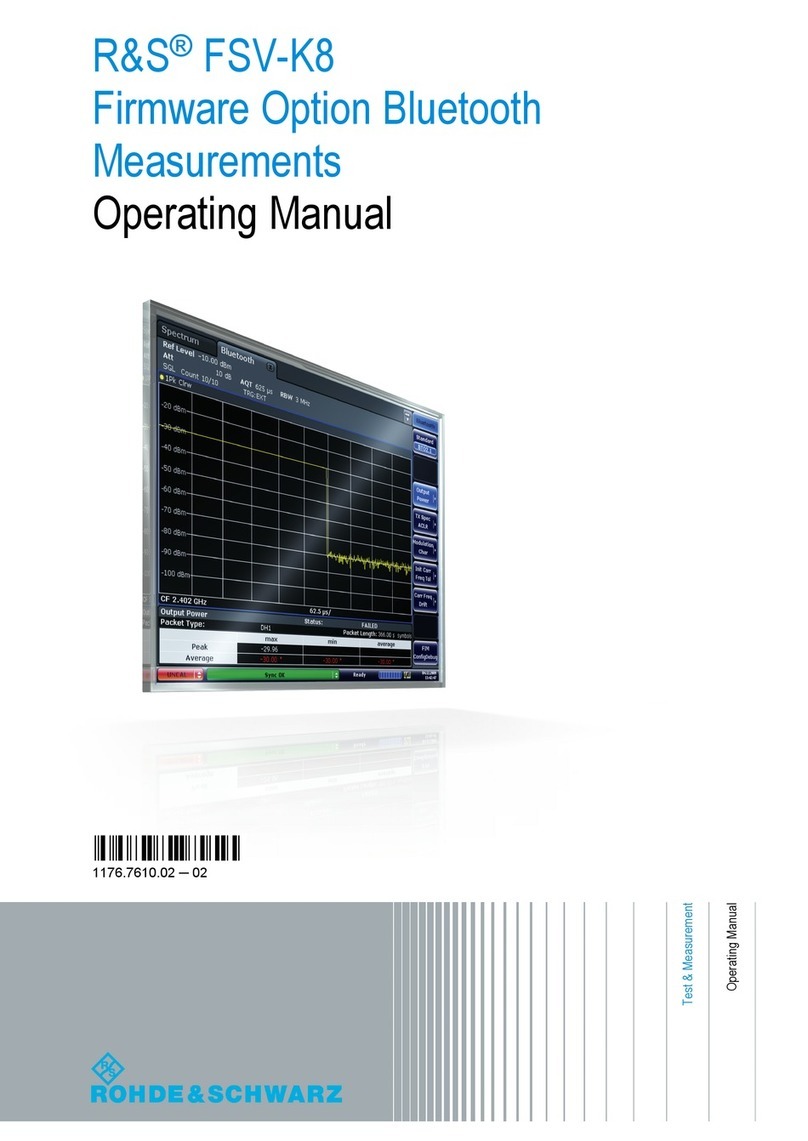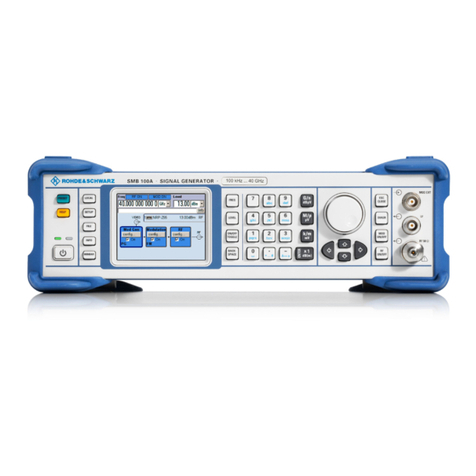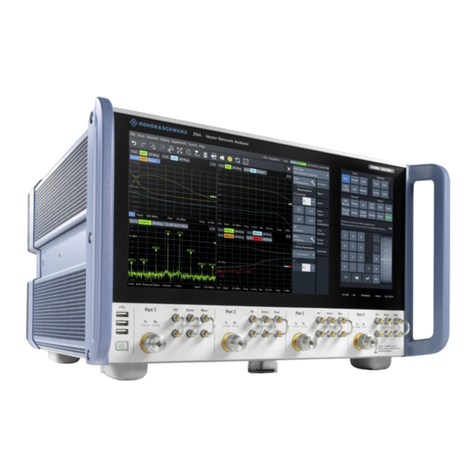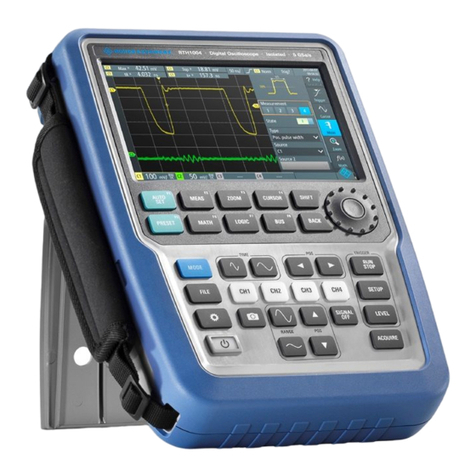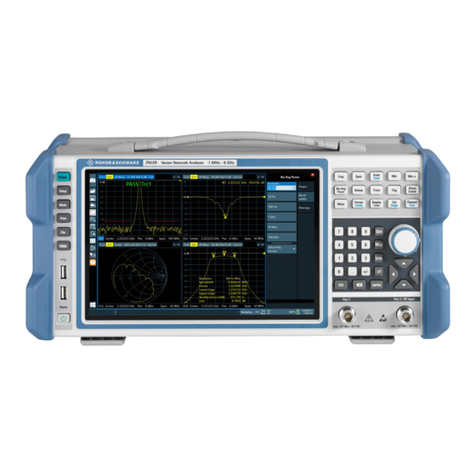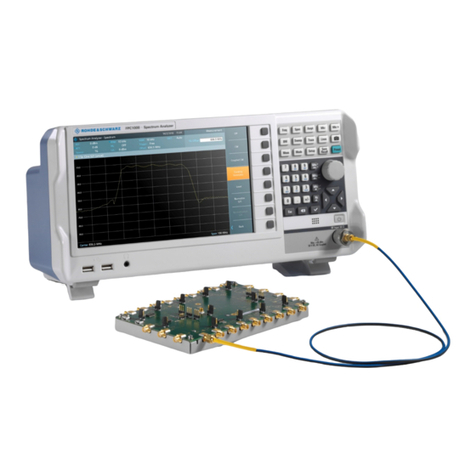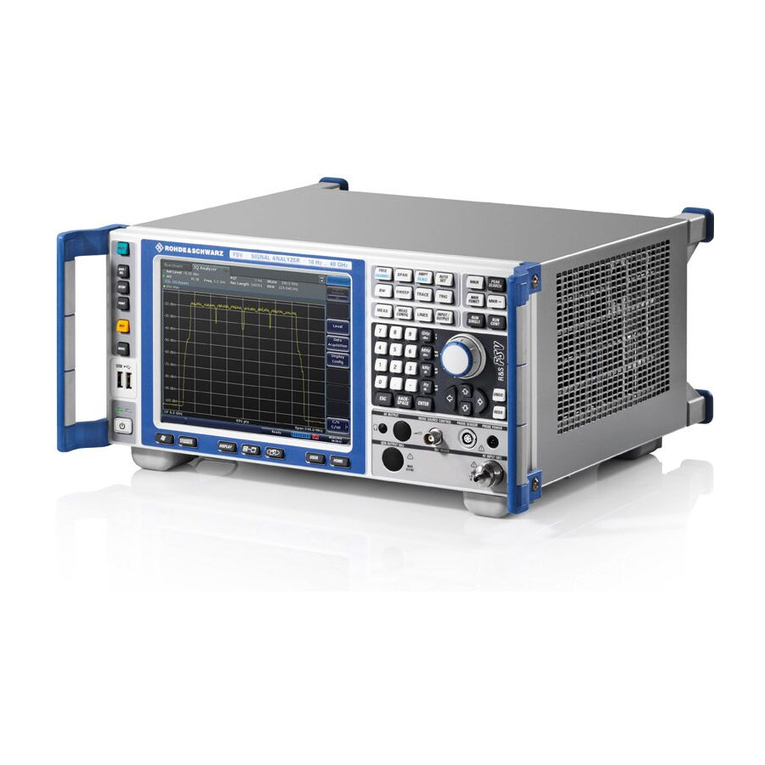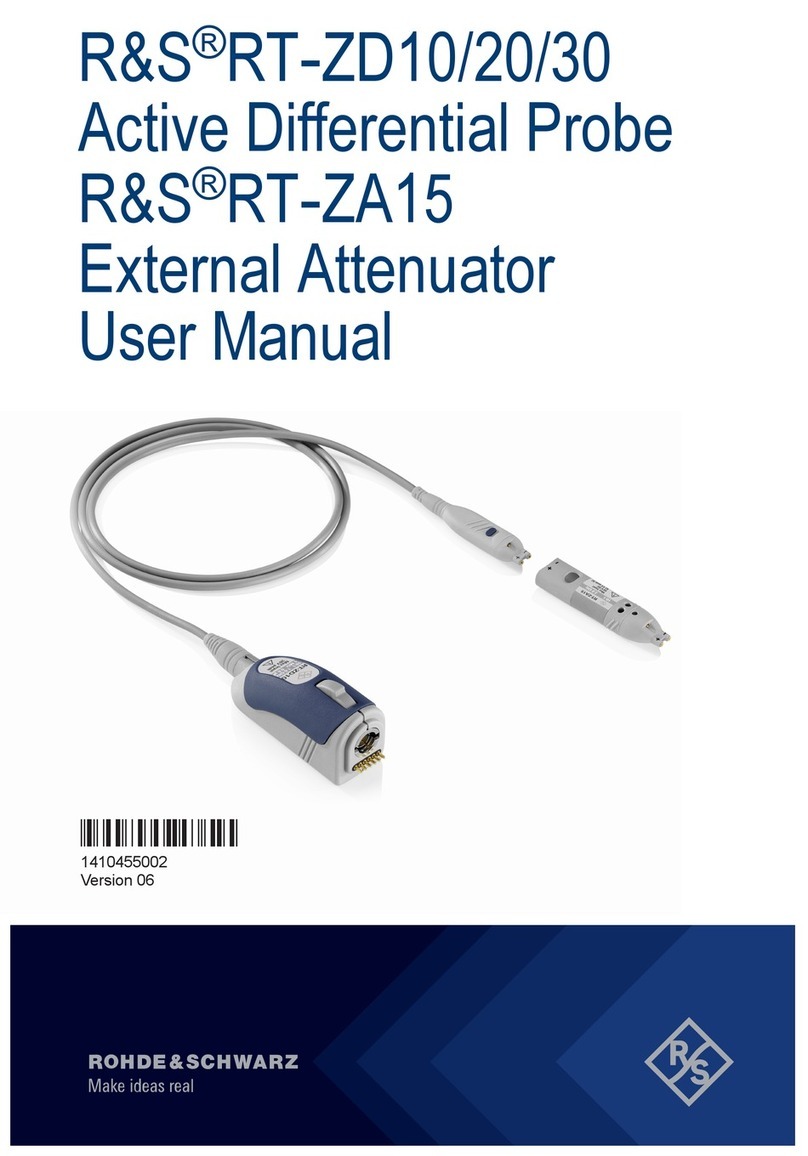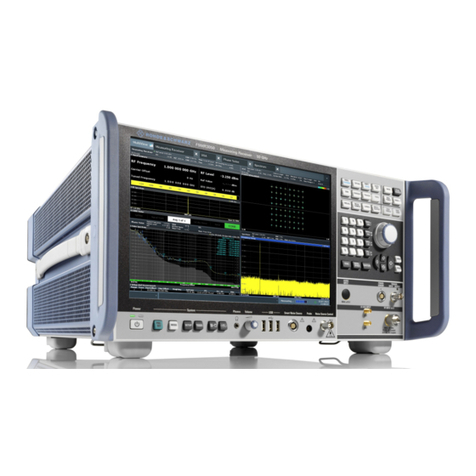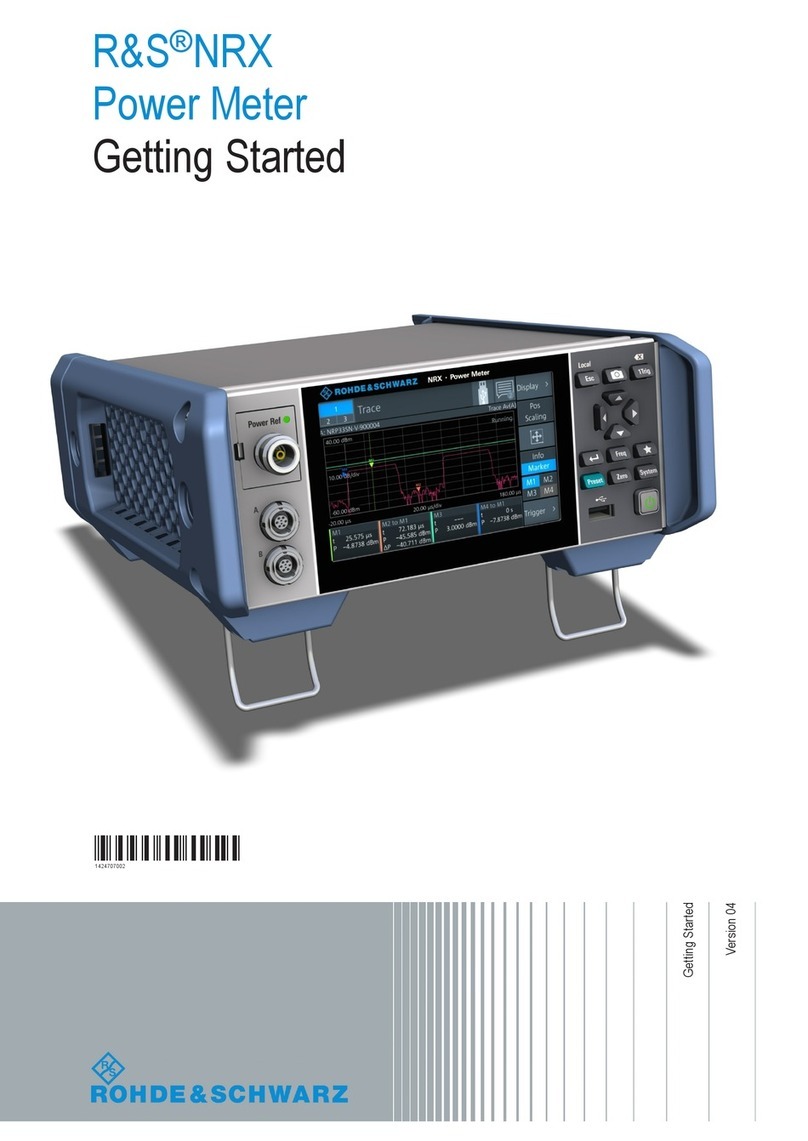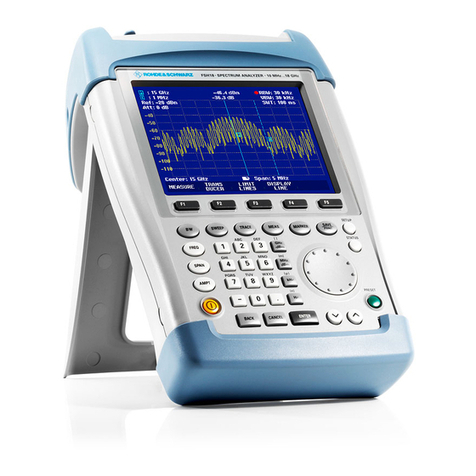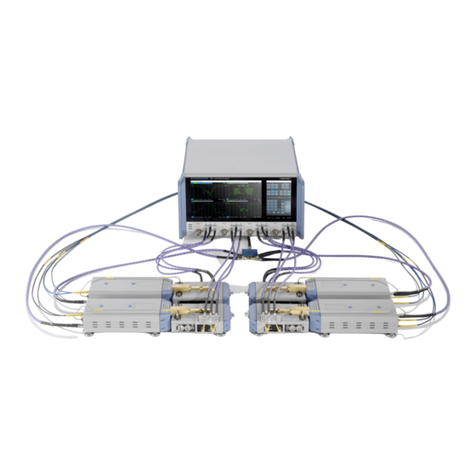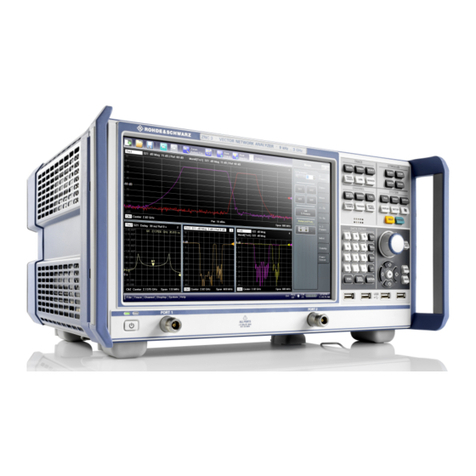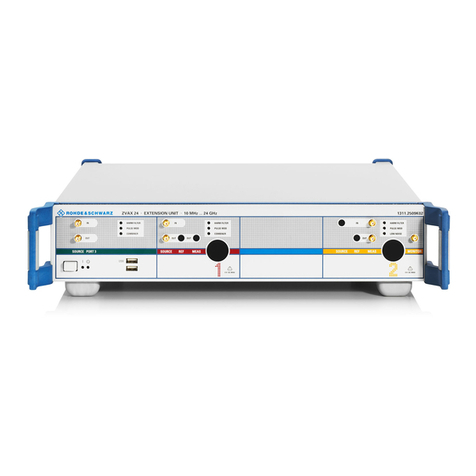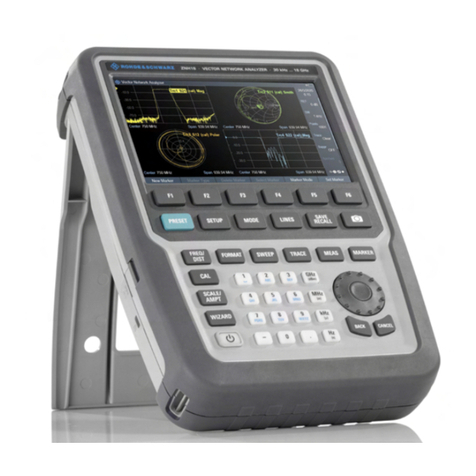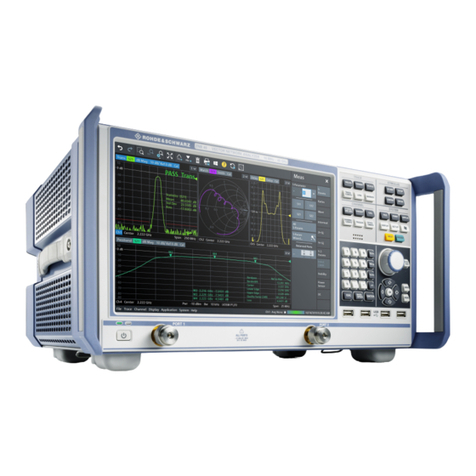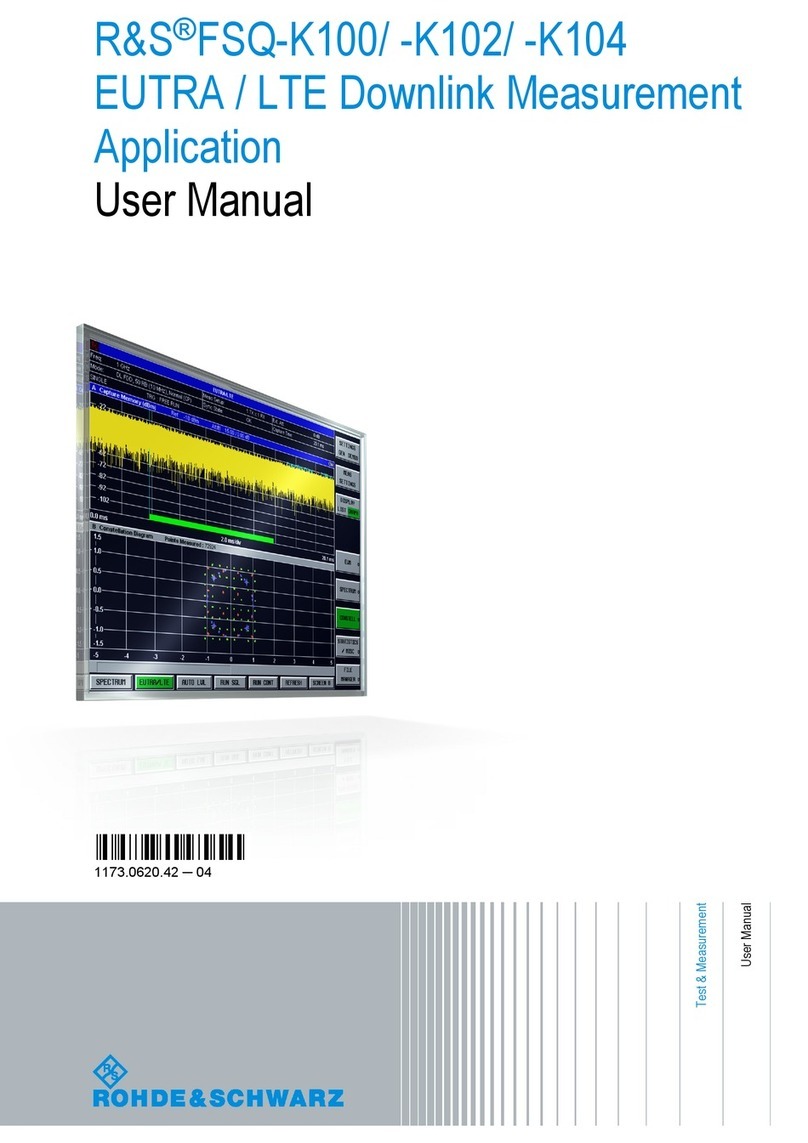5Handheld Spectrum Analyzer ¸FSH
Field-strength measurements with isotropic
antenna
When used with the ¸TS-EMF isotropic antenna, the ¸FSH can
determine the direction-independent resultant field strength in the frequency
range from 30 MHz to 3 GHz. For measuring the resultant field strength, the
antenna has three orthogonal antenna elements. The ¸FSH successively
triggers the three antenna elements and calculates the resultant field strength.
The calculation takes into account the antenna factors for each individual
antenna element as well as the cable loss of the connecting cable.
TDMA power measurements
By means of the TDMA POWER function, the ¸FSH performs time-domain
power measurements within a timeslot of TDMA (time division multiple access)
methods. All the settings required for the GSM and EDGE standards are
predefined on the ¸FSH to make these measurements easier for the user.
In addition, up to five user-definable instrument setups can be loaded into the
¸FSH using the ¸FSH View software.
Channel-power measurements
The ¸FSH determines the power of a definable transmission channel
by means of the channel-power measurement function. A channel-power
measurement for the digital mobile radio standards 3GPP WCDMA, cdmaOne
and CDMA2000® 1x is performed at a keystroke with all the correct instrument
settings. With the ¸FSH View software, the user can quickly and easily
define further standards and load them into the ¸FSH.
Field-strength measurements
When measuring electric field strength, the ¸FSH takes into account
the specific antenna factors of the connected antenna. Field strength is
displayed directly in dBµV/m. If W/m2is selected, the power flux density is
calculated and displayed. In addition, frequency-dependent loss or gain of, for
example, a cable or an amplifier can be corrected. For quick and easy result
analysis, the ¸FSH provides two user-definable limit lines with automatic
limit monitoring.
¸FSH with Active Directional Antenna ¸HE 200 (optional accessory)
CDMA2000® is a registered trademark of the Telecommunications Industry Association (TIA USA)
¸FSH with Isotropic Antenna ¸TS-EMF (optional accessory)












